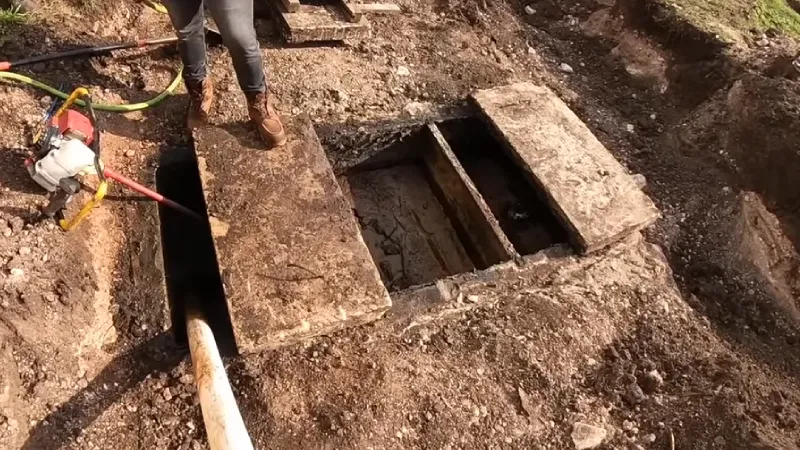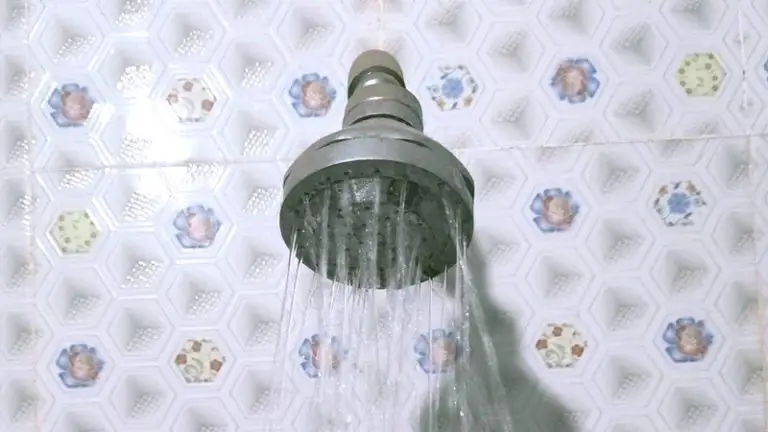1975 Septic Tank Design [Advantage, Disadvantage, Maintaince]

Septic tanks are an essential component of a septic system. They are self-contained wastewater treatment systems. These systems are commonly used in areas without access to a municipal sewage treatment plant. They are designed to treat and dispose of household wastewater in an environmentally responsible manner.
The design of septic tanks has evolved over time. The design used in 1975 was widely popular at the time. In this article, we will take a closer look at the 1975 septic tank design. We will discuss its advantages and disadvantages. We will also cover the necessary maintenance and upkeep required to keep it functioning properly.
You'll Learn About
The Septic Tank Design in 1975
The septic tank design used in 1975 typically consisted of two compartments. They were separated by a dividing wall known as a baffle. The first compartment allowed solids to settle to the bottom. It also allowed scum to float to the top. The second compartment was used to further clarify the effluent. This was done before it was discharged into the leach field.
The size and position of the baffle were important factors. They affected the effectiveness of the septic tank in separating solids and liquids. The septic tank also had an inlet and outlet pipe. These allowed for the flow of wastewater into and out of the tank.
The inlet pipe was usually located near the bottom of the tank. This allowed for the settling of solids. The outlet pipe was located higher up. This prevented solids from exiting the tank. In 1975, septic tanks were typically made of concrete. Other materials such as fiberglass and plastic were also used.
Advantages and Disadvantages of the 1975 Septic Tank Design
The septic tank design used in 1975 had several advantages and disadvantages.
Simple and Inexpensive
It was relatively simple and inexpensive to install and maintain. The two-compartment design was effective at separating solids and liquids. The use of concrete as a construction material made the tanks durable and long-lasting.
Did Not Require Any Moving Parts
Additionally, the 1975 septic tank design did not require any moving parts or electricity. This made it low-maintenance and reliable.
However, there were also several disadvantages to the 1975 septic tank design.
Required Regular Pumping
It required regular pumping to remove the accumulated solids from the first compartment. If the tank was not pumped out regularly, the solids could build up. They could potentially enter the second compartment. This could clog the leach field and cause issues with the overall function of the septic system.
No Treatment
Another disadvantage was that the design did not provide any treatment of the wastewater. This was beyond the initial separation of solids and liquids. This meant that the effluent discharged into the leach field still contained high levels of nutrients and bacteria. These could potentially contaminate the soil and groundwater.
Overall, the septic tank design used in 1975 was effective at separating solids and liquids. However, it had some limitations in terms of its ability to fully treat the wastewater before it was discharged into the environment.
Maintenance and Upkeep of 1975 Septic Tanks
Proper maintenance and upkeep are essential. They ensure that a septic tank of the design used in 1975 is functioning properly. Some important tasks to consider include:
Pumping Out the Tank
It is important to have the septic tank pumped out regularly. This removes the accumulated solids from the first compartment. How often the tank needs to be pumped depends on the size of the tank and the amount of wastewater it handles. A general rule of thumb is to have it pumped out every 3-5 years.
Inspecting the Tank and Pipes
It is a good idea to have the septic tank inspected by a professional every few years. This ensures that it is in good condition and functioning properly. This can include checking the inlet and outlet pipes for any blockages or damage. It can also include looking for any cracks or leaks in the tank itself.
Maintaining the Leach Field
The leach field is an important part of the septic system. It is important to keep it in good condition. This ensures the proper functioning of the overall system. This includes avoiding placing heavy loads or driving over the area. It also includes planting grass or other vegetation to help absorb the effluent.
Conserving Water
Reducing the amount of water used in the household can help. It reduces the strain on the septic system and extends the time between pump-outs. This can be achieved by fixing any leaks, taking shorter showers, and only running full loads of laundry and dishes.
By following these maintenance and upkeep tips, you can help ensure that your 1975 septic tank is functioning properly and efficiently.
Tips for Maintaining and Caring for a 1975 Septic Tank
Here are some additional tips for maintaining and caring for a 1975 septic tank:
Avoid Using Chemicals
Using chemicals such as bleach and drain cleaners can harm the beneficial bacteria in the septic tank. These bacteria help break down waste. Instead, use natural alternatives or bacterial septic tank treatments. These help maintain a healthy balance in the tank.
Protect the Tank From Damage
Be careful not to drive over or place heavy loads on top of the septic tank or leach field. This can cause damage and compromise the function of the system.
Avoid Flushing Non-biodegradable Items
Do not flush non-biodegradable items such as wipes, feminine hygiene products, or paper towels down the toilet. These items can cause blockages in the pipes and tank. They can also be difficult to break down.
Keep a Record of Pump-outs
It is a good idea to keep a record of when the septic tank was last pumped out. Also, note any issues or maintenance that was done. This can help you keep track of the maintenance schedule. It can also help identify any potential problems early on.
Educate Household Members
Make sure all household members are aware of how the septic system works. They should also know what can and cannot be flushed down the toilet. This can help prevent issues with the system. It can also extend the time between pump-outs.
Is the 1975 Septic Tank Design Good?
The purpose of the first compartment is to allow solids to settle to the bottom. It also allows scum to float to the top. The second compartment is used to further clarify the effluent. This is done before it is discharged into the leach field.
The square hole that you mentioned is typically used as a dividing wall between the two compartments. It is known as a baffle. It is designed to allow liquid to pass through. It also prevents solids from flowing into the second compartment.
It is important to maintain the septic tank. Have it pumped out regularly to remove the accumulated solids. This prevents them from entering the second compartment. It also prevents them from potentially clogging the leach field.
If the second compartment is filled with sludge and grease, as depicted in the first image you provided, it may indicate a problem with the septic system. It is recommended to have it inspected and possibly cleaned out.
Editor’s Note
Septic tanks from the 1970s, like the 1975 design, were built to last but may lack modern efficiency features. These systems are durable and cost-effective but require regular maintenance to prevent issues like clogs or leaks. Upgrading to newer designs can improve performance and reduce environmental impact.
If you’re dealing with septic tank issues, it’s worth exploring why your bathroom smells like poop all the time, as this could indicate a problem. Additionally, understanding if one vent can serve your entire bathroom can help optimize your plumbing system. For more insights, check out how a plumbing loop works for multiple shower heads.
Conclusion
The septic tank design used in 1975 was a widely popular and effective way to treat and dispose of household wastewater. While it had some advantages, such as simplicity and durability, it also had some limitations. These included a lack of full wastewater treatment and the need for regular pump-outs.
Proper maintenance and upkeep are essential. They ensure that a septic tank of this design is functioning properly and efficiently. It is important to understand the design and proper care of your septic system, regardless of its age. This ensures that it is working effectively and protecting the environment.
If you have any concerns about the functioning of your septic system, it is always a good idea to seek the help of a professional.

